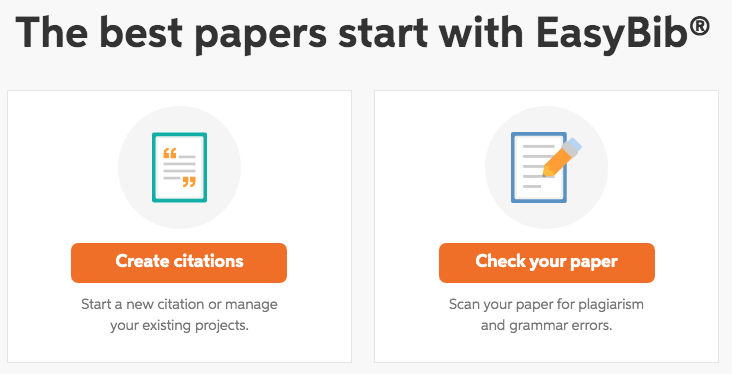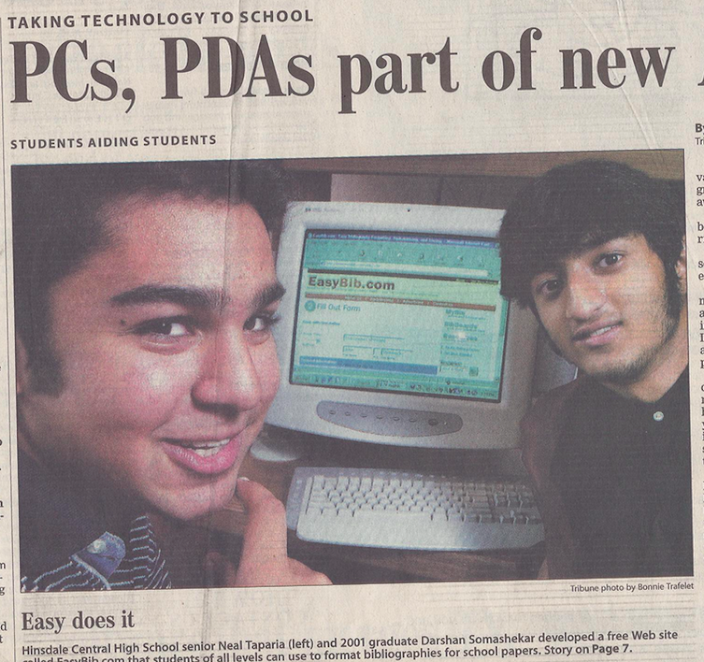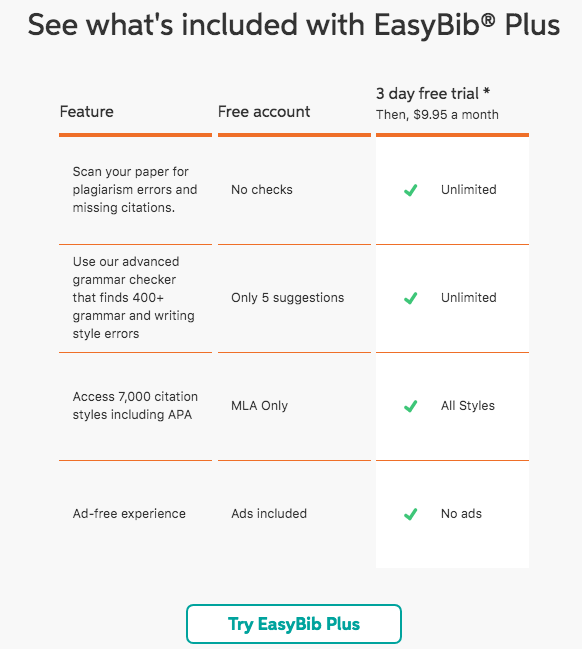Growing to $10m and Selling the Business We Launched in High School
Hello! What's your background, and what are you working on?
Hi! My name is Neal Taparia. I’m the co-founder of EasyBib.com.
I started learning how to build websites as a teenager in Chicago, but it was never really my strength. I ended up studying economics and religion (my dad never understood why I choose religion), and I had a brief stint at Lehman Brothers after college, but left eight months before it came crumbling down.
EasyBib helps students create citations. Users can enter a book title or a website URL, and the site will automatically generate and organize your citations, saving students a ton of time and avoid accidental plagiarism. You can also upload a paper to get grammar recommendations and to see if you forgot to cite text that was quoted elsewhere.
By the time we sold our company, we were reaching over 30M students yearly and doing well over $10M in revenue.
What motivated you to get started with EasyBib.com?
In 2001, my friend and co-founder Darshan "Darsh" Somashekar and I were high school students. We were also learning about how to build websites. Darsh had already built a few, including a gadget review site and an HTML tutorial site.
We had papers to write, and we both agonized over the tedious formatting rules of a bibliography and how much time it would take. That’s when we had our light bulb moment to create EasyBib.
Since we represented our own core customer, the student, we knew what we needed to build. This was a product that would alleviate our immediate pains. We surveyed our friends to see if they would use a site that would automatically generate citations. Most responded with, “Duh, of course.” There were naysayers, though, who just said they would continue to write bibliographies by hand. We didn’t take too much stock in their opinion, because we were only days away from launching. We also thought they were crazy.
Given that we were high school students, our competing priorities were school activities, the SAT, and getting grades our parents would be happy with. Needless to say, we didn’t have adult responsibilities like we do today. More importantly, we had some free time!
What went into building the initial product?
For two months straight, Darsh and I would work at each other's houses after school and over the weekend, building out the first version of EasyBib. As students, we knew what kind of product we wanted, and we knew it had to be easy, hence the name: EasyBib.
Together, we sketched out our vision for the site. Darsh had the better technical expertise and focused on coding the first version, while I focused on QA and learning all the rules of MLA formatting. Ironically, I became an expert at the thing I initially disliked!
Launching the site did not take much investment. We spent under $50 to host the first version of the site. Outside of that the real cost of building EasyBib was our time. As you can imagine, there was little opportunity cost, and this was a fun project for us.
In retrospect, we followed many of the principles of the minimal viable product approach. We just wanted to get something out there because we thought it would help students, not necessarily to launch a business that would become a huge part of our lives. We focused on building a product and features that met our immediate needs, and since we ourselves were the end customer, that insight came easily. Specifically, it meant citing resources like books, websites, and journals. We didn’t sweat details like business model and account management because we just wanted to see if people liked our service as much as we did. In other words, we were unknowingly testing for product/market fit.
What’s your tech stack?
Originally our tech stack was ColdFusion. Darshan had learned CF earlier that year and thought it would be a good language to write in. But over time, we realized there were languages with much larger developer communities. We migrated to PHP a few years later, then in 2008 switched to a PHP MVC framework called Zend along with some Symfony-based PHP microservcices. That kept us humming until a year ago, when we changed the front end to reactjs and began upgrading our microservices away from PHP.
There were plenty of technical challenges we faced along the way. Even as we were updating our code in 2018, there were libraries Darshan had written in 2008 still powering core parts of the site, namely the bibliography formatting service. And naturally, as you grow over time, you end up accruing lots of tech debt.
We first tried tackling this with an end-to-end refactor. Initially we thought it would take a couple of months, but after nine months we ended up rethinking our approach. We redid the redesign to give us quicker wins on smaller components of our site, and gradually transitioned over.
How have you attracted users and grown EasyBib.com?
We went live with the site in February of 2001. It was very exciting for us, but of course, we needed to get users.
We tried everything we could think of. We went into AOL chatrooms, which were popular back then, and would post in relevant chat rooms about why EasyBib was great service. We flyered our school with advertisements that we printed from the library. I remember putting EasyBib flyers in the bathroom stalls because I figured someone would have to read it! =)
We would also email teachers, since their email addresses were readily discoverable online. When we got responses saying thanks for the resource, we knew that was a strategy to double down on. I would come home after school and email hundreds of teachers. I don’t think many students were doing that back then.
Slowly traffic started coming in, but we had our big break when we cold-emailed the Chicago Tribune at the start of the 2001–2002 school year. We explained that we created EasyBib to help other students. A few days later a photographer showed up at my house and took pictures of me and Darsh, and then a few days after that we were featured on the front page of the business section of the Chicago Tribune. Within a week we saw other newspapers, including the USA Today, cover EasyBib.
We used awstats, an open-source tool that counted sessions, and we would see the numbers tick up everyday. The first day we had 1,000 visitors and were pumped, and when it reached 10,000 we were over the moon.
We were lucky too. We found that people recommended our product because it would save them time when writing a paper and help them avoid accidental plagiarism. After the press coverage, we saw that organic traffic kept ticking up. The key reason is because we focused on ease and simplicity. EasyBib was so easy it had a “wow” factor that you wanted to tell your friends about. It taught us that we needed to create products that were intuitive and simple and that we, the end users, would want ourselves, not necessarily what our teachers might want. It was also the inspiration for our corporate name: Imagine Easy Solutions.
Looking back, our naivety was an asset. We just tried everything. We didn’t overthink or hesitate. When something worked, we doubled down. It felt like common sense, and we were having fun.
Today, we have a new gaming initiative to tie brain games with classic games. We just launched our first game, Solitaired, a free solitaire game like the name suggests. Despite our experience we feel like kids again, telling everyone we can about the site and learning what works. This time though, we have the know-how to prioritize growth initiatives, and have clear goals on how we can measure success. We didn’t have that discipline before.
What's your business model, and how have you grown your revenue?
Users soon asked us to offer additional citation styles. We introduced APA formatting in 2004 when we were in college. Using PayPal, we put it behind a subscription wall. Sure enough, we found that people were willing to pay for it.
At the time, we didn’t know much about SaaS metrics like conversion rate and retention. We were just thrilled people were willing to pay us. Over the years, we learned about testing different plans and price points, even doing long-term tests to understand the seasonality of different pricing plans.
We found that the idea of a lifetime plan was great for our users. They liked the idea of paying only once. However, it wasn’t great for maximizing the generally accepted accounting principle revenue.
Later, testing became part of the DNA of our company. We were surprised countless times. For instance, we tested a $300 lifetime plan, and to our surprise some of our users bought it! At other times what we thought were no-brainer improvements didn’t move the needle at all. I would advise everyone to plan on making testing a backbone of their growth plans, because ultimately data, not intuition, will tell you if you’re right or wrong.
In 2007, we were getting millions of visitors, and a friend of ours, who later became became our VP of advertising, suggested running display ads. We spent years learning how to optimize CPMs (the amount you make from ads) led by our friend. We later built our own team of analysts and engineers dedicated towards this, and we achieved ad CPM rates well beyond industry standards.
This ended up becoming a secret weapon for us. None of our competitors invested in ad monetization like we did. Over the course of seven years, we acquired all our competitors in the space, leveraging our ad and subscription know-how, leading to strong organic and inorganic growth.
By 2016, our core business was doing well over $10M in revenue, with margins north of 50%, all without taking on financing. Darsh and I decided our business was in a place where if we sold it, it would achieve the goal we had set when we plunged into the business full time in 2008. So in 2016, we sold our business to a public company called Chegg, where we continued to further grow the business as VPs.
We’ve made so many decisions and mistakes over the years. Our success really came down to some key insights: focusing on intuitive products, investing in monetization strategies, learning SEO, and acquiring our competition. There were so many details in between that we sweated, but in hindsight they just weren’t big enough to matter. I see this with many entrepreneurs I help today, where they see the trees and not the forest. Focus on what’s really big enough to matter (or, as we say, "BETM") and that will start giving you results.
We never imagined our business could become this big. At Chegg, we scaled the business considerably. We learned to think big while there and set big goals. Our 16-year-old selves would have never believed this story.
What are your goals for the future?
We recently left Chegg, which we loved and where we learned how to be strong operators. We've become entrepreneurs again. As mentioned, we’re exploring the link between classic games and brain training with Solitaired.
We’ve been managing teams for some time now, so we’re rolling up our sleeves again like we did when we were 16. We’re early on, but our goal is to achieve 100,000 visits by the end of the year by testing various marketing strategies and creating a fun user experience. If we can achieve that, we’ll know we can scale. It won’t be easy, as the space is commoditized with tons of games out there, which is why we’re open to acquiring. We’ll have to figure out ways we can be different from the rest of the pack, and we think the connection to brain training could be the answer.
Have you found anything particularly helpful or advantageous?
I’m lucky because I started a business with a good friend, and that we just so happen to have complementary skills sets. Darsh is more technical and I’m more business-oriented, while we're both able to build off each other strategically. Moreover, there is mutual trust to have objective debates, and when there is a disagreement we're willing to roll the dice on each other’s ideas. Having a healthy co-founder relationship can go a long way.
We never had a board of directors for our business, but at Chegg we had a boss. That was a big change for sure, but he held us accountable, and pushed us to grow the business beyond what we thought it could do. I wish we'd had such healthy accountability earlier on.
What's your advice for indie hackers who are just starting out?
We grew our business from 2001 to 2019. It took time and patience. You hear about these overnight success stories, but they're the sensational outliers that make the news. Think big, and with determination and focus, your business will grow.
Also, to reiterate, focus on what’s big enough to matter. BETM! Our success boils down to a few key strategic moves. What will really inspire growth and be scalable? What will really be signal vs. noise? It’s not necessarily obvious, but go through the exercise of what initiatives might matter most.
Lastly, as you get bigger, surround yourself with great people. It’s tried and true. While at Chegg, we had a team of talented people to think through execution. We were just there to keep our team focused on the big picture.
Where can we go to learn more?
I used to write some of my learnings on Forbes. I have some free time now, so I hope to do that again. You can also follow me on Twitter @tapneal. Darshan’s twitter is @darshan.
I love advising and helping entrepreneurs, so don’t hesitate to connect with me on linkedin
Otherwise, if you have any questions, feel free to leave them in the comments below and I’ll respond!




Hey Neal! Read the entire interview and man do I have to say it was awesome! I'm deeply inspired by how both you and Darsh both grew Easybib alone!
If it's not too much to ask for, I do have one question! And that is, what's one piece of advice you'd give to anyone looking to start a SaaS?